Monoculture farming, the practice of cultivating a single crop over a large area for an extended period, has been both praised and criticized over the years. This method has dominated the agricultural industry in several parts of the world due to its efficiency and high yields. However, concerns about its long-term sustainability, environmental impact, and effects on soil health have sparked debate among farmers, scientists, and policymakers. This blog post explores the intricacies of monoculture farming, delving into its benefits, challenges, environmental implications, and potential solutions.
What is Monoculture Farming?
Monoculture farming refers to the cultivation of a single crop species over a large area and often for multiple consecutive seasons. Unlike polyculture, where different crops are planted together, monoculture focuses on maximizing the production of one crop. This method is prevalent in modern agriculture, especially with crops like corn, wheat, rice, and soybeans.
Historical Context and Evolution
Monoculture farming has a long history, evolving over centuries to become a dominant agricultural practice in modern times. Its development is closely tied to advancements in agricultural techniques, economic demands, and population growth.
Ancient Agricultural Practices
In early human history, agriculture was largely polyculture, meaning multiple crops were grown together in the same field. Ancient civilizations such as those in Mesopotamia, Egypt, and Mesoamerica practiced mixed farming, growing various crops like wheat, barley, beans, and maize alongside livestock. This diversity helped maintain soil fertility and reduce the risk of crop failure due to pests or weather conditions.
However, even in these early times, forms of monoculture existed in specialized crop cultivation areas, particularly for grains and staples like rice in China and wheat in the Fertile Crescent. Certain crops dominated large swaths of land due to their importance in the local diet, economy, or trade.
The Agricultural Revolution
The Agricultural Revolution in the 18th century marked a significant turning point in the evolution of monoculture farming. This period, particularly in Britain and Western Europe, saw innovations such as the enclosure movement, which consolidated small farms into larger fields. This allowed for more controlled and large-scale cultivation, laying the groundwork for the monoculture approach.
New technologies like the seed drill, invented by Jethro Tull, made planting crops more efficient. The introduction of systematic crop rotation, which helped maintain soil fertility, was also key in improving the yield of monoculture farming. Despite crop rotation, certain dominant crops such as wheat or barley were grown in abundance in these large, enclosed fields.
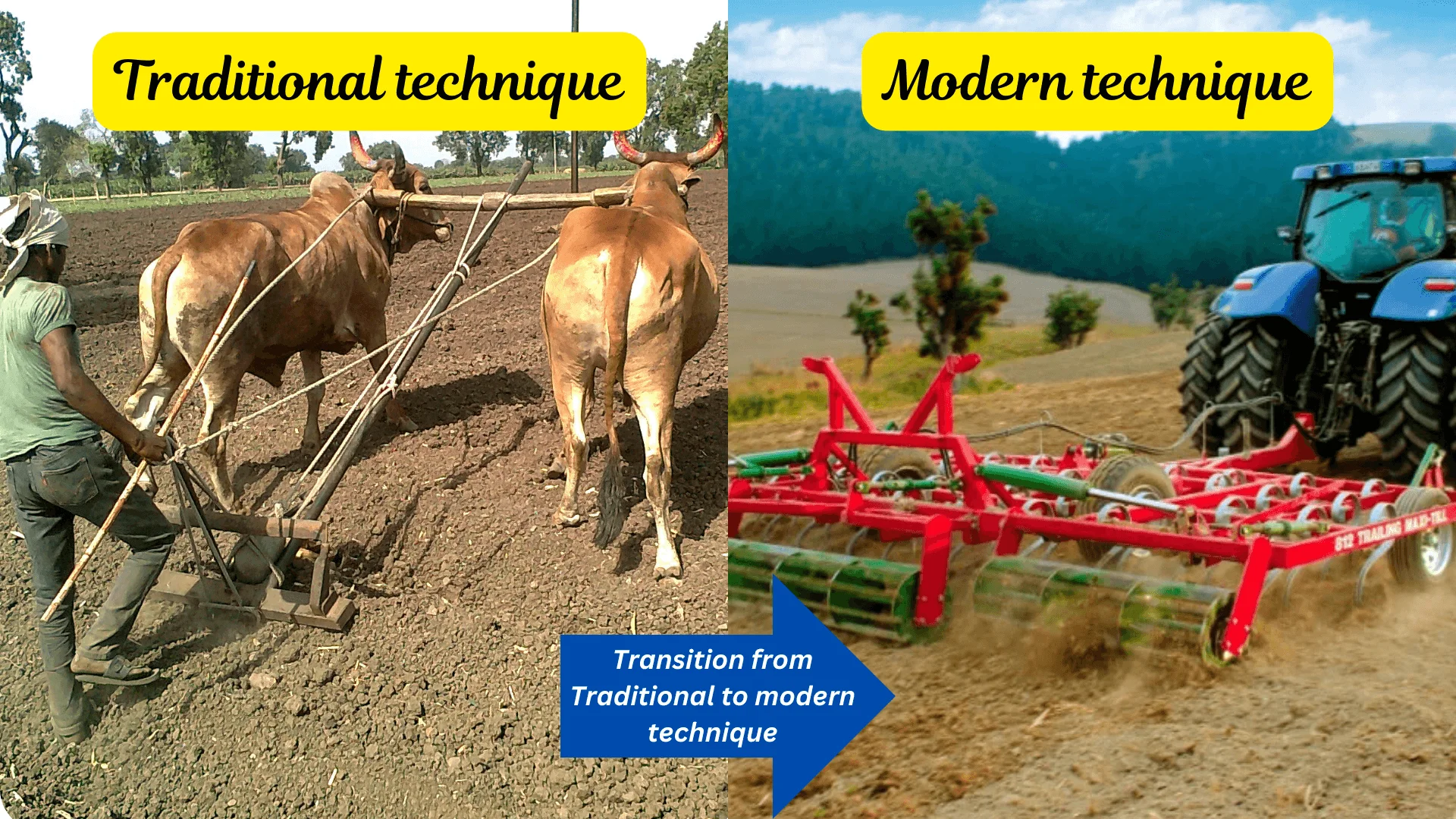
The Industrial Revolution and Mechanization
The Industrial Revolution of the late 18th and 19th centuries further propelled monoculture farming by introducing mechanized tools such as tractors, plows, and harvesters. These tools made it possible to farm larger areas of land with less manual labor, increasing productivity and allowing for the expansion of monocultural practices.
As transportation infrastructure improved, particularly with the advent of railroads and steamships, it became easier to transport large quantities of a single crop over long distances. This facilitated the growth of commercial farming, where the focus shifted to growing single crops like cotton, sugar, and tobacco on large estates for trade and export, especially in colonial regions like India, the Americas, and Africa.
The Green Revolution
The Green Revolution of the mid-20th century represents the most significant phase in the evolution of monoculture farming. In response to global food shortages and rapid population growth, governments and scientists promoted agricultural methods that could increase food production.
During this period, the development of high-yielding crop varieties (HYVs), particularly for rice and wheat, revolutionized farming. These new varieties, combined with the use of synthetic fertilizers, pesticides, herbicides, and advanced irrigation systems, allowed for the expansion of monoculture farming on an unprecedented scale.
The Green Revolution’s success was particularly notable in countries like Mexico, India, and the Philippines, where food production increased dramatically, helping to avert famine and feeding millions of people. However, this came with an increased reliance on chemical inputs and monoculture practices to maintain high yields.
Late 20th Century to Present: Globalization and Industrial Agriculture
In the latter half of the 20th century and into the 21st century, monoculture farming has become synonymous with industrial agriculture. Large-scale monocultures of crops like corn, soybeans, wheat, rice, and palm oil are now central to global food production and trade.
Globalization and the rise of multinational agribusinesses have contributed to the expansion of monoculture farming. Countries like Brazil, the United States, and China have become leading producers of monoculture crops, driven by global demand for food, livestock feed, biofuels, and raw materials for industrial use.
Monoculture farming has become highly mechanized and industrialized, with sophisticated machinery, genetically modified organisms (GMOs), and intensive chemical inputs dominating the landscape. Although these practices have improved yields and efficiency, they have also led to concerns about environmental degradation, loss of biodiversity, and long-term sustainability.
The Impact of Technological Innovations
Monoculture farming has evolved alongside technological innovations in agriculture. Here are some key technological milestones that have shaped its development:
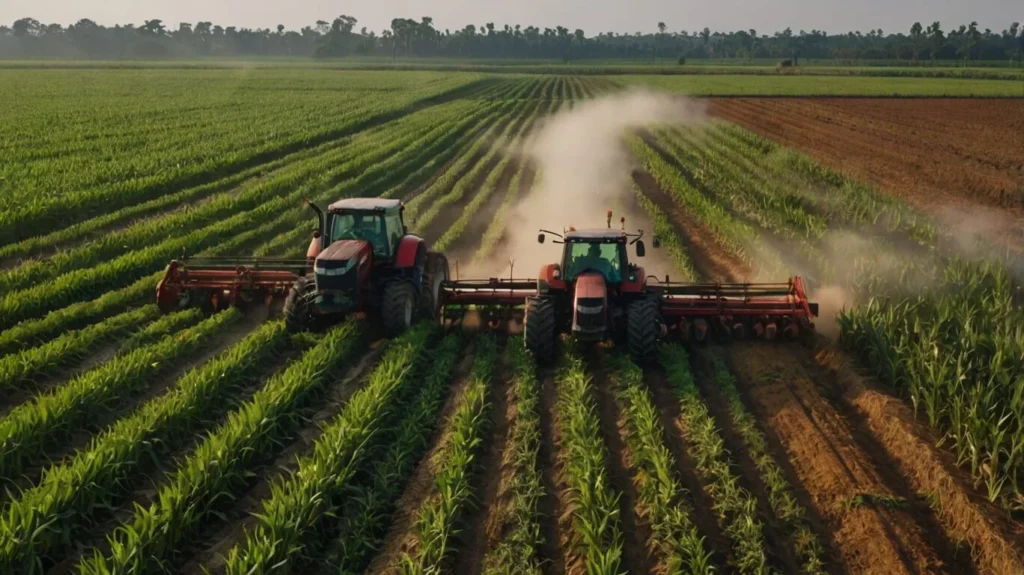
- Pesticides and Fertilizers: The introduction of chemical fertilizers and pesticides in the early 20th century allowed farmers to address the limitations of soil depletion and pest infestation, issues that frequently arose in monoculture systems.
- Genetically Modified Crops: In recent decades, GMOs have enabled the cultivation of crops with specific traits, such as pest resistance or drought tolerance. This has further entrenched monoculture farming in many parts of the world.
- Precision Agriculture: With the advent of GPS technology and data analytics, precision agriculture allows for better management of monoculture systems by optimizing inputs like water, fertilizer, and pesticides, reducing waste and environmental harm.
The evolution of monoculture farming has transformed the agricultural landscape, making it possible to feed billions of people. However, its legacy is mixed. While monoculture has brought unprecedented efficiency and productivity, it has also contributed to environmental challenges such as soil degradation, pest resistance, and biodiversity loss. As we look to the future, it is crucial to consider how monoculture farming can be adapted to meet the needs of a growing population while safeguarding the planet’s ecosystems and natural resources.
Benefits of Monoculture Farming
- High Efficiency and Yield
- Monoculture farming allows for the mass production of crops using streamlined techniques. The focus on a single crop enables farmers to specialize in specific cultivation practices, maximizing yields and reducing labor costs.
- Reduced Costs and Labor
- Since farmers only need to invest in equipment and knowledge for one crop, monoculture can lead to reduced operational costs. There is less need for crop rotation or diversification strategies, simplifying farm management.
- Specialized Farming Techniques
- The use of specialized machinery, irrigation systems, fertilizers, and pest control methods tailored to a particular crop ensures that resources are efficiently used. These technologies have made large-scale farming more feasible, increasing food availability globally.
- Predictable Market Supply
- Monoculture allows for more stable production of key crops, ensuring consistent supply chains for food processing industries. For instance, the predictable supply of corn or soybeans supports industries that rely on these crops for products like animal feed, biofuels, and processed foods.
Challenges of Monoculture Farming
Despite its short-term efficiency, monoculture farming comes with several challenges that raise concerns about its long-term sustainability.
- Soil Degradation and Nutrient Depletion
- Repeated cultivation of the same crop year after year exhausts the soil’s nutrients, leading to reduced fertility. Monoculture depletes essential nutrients like nitrogen, phosphorus, and potassium, which are necessary for healthy crop growth. Over time, this leads to declining yields, forcing farmers to rely heavily on synthetic fertilizers, further degrading soil health.
- Increased Pest and Disease Vulnerability
- Monoculture creates a homogenous environment that encourages the proliferation of pests and diseases. Without the biodiversity that typically limits pest populations, these pests can spread rapidly across the monoculture fields. Insects, fungi, and bacteria can quickly devastate entire crops, leading to heavy losses.
- Dependence on Chemical Inputs
- To counteract the nutrient depletion and pest problems inherent in monoculture systems, farmers often resort to excessive use of chemical fertilizers, herbicides, and pesticides. This heavy reliance on chemical inputs can lead to soil contamination, water pollution, and harm to beneficial organisms like bees.
- Environmental Impact
- Monoculture farming contributes to several environmental issues. The frequent use of chemical fertilizers leads to eutrophication, a process where excess nutrients runoff into water bodies, causing harmful algal blooms and dead zones. Moreover, monoculture requires vast tracts of land, leading to deforestation, loss of biodiversity, and habitat destruction.
The Role of Monoculture in Modern Agriculture
Monoculture farming has become deeply integrated into the global food system. Many large agricultural enterprises rely on monoculture to meet the growing demand for food, biofuels, and other crop-based products. For example, in countries like Brazil, the expansion of soybean monoculture has driven deforestation in the Amazon, leading to international concern over its environmental consequences.
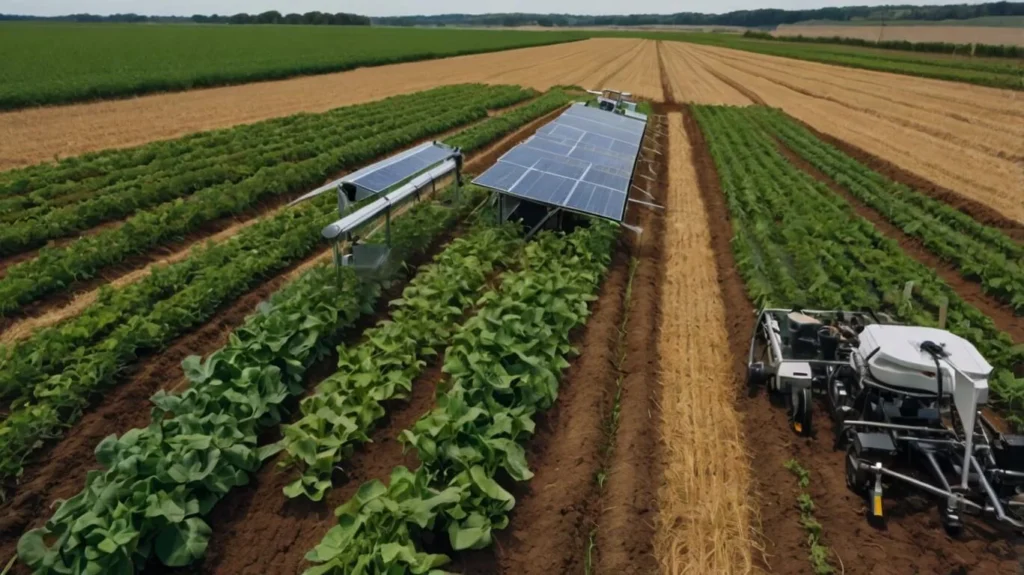
At the same time, governments and agricultural corporations are working to improve the sustainability of monoculture farming through innovation and technology. Precision agriculture, genetically modified crops, and soil conservation techniques are being explored to reduce the adverse effects of monoculture while maintaining high yields.
Alternatives to Monoculture Farming
To address the challenges posed by monoculture farming, several alternative farming practices have been proposed:
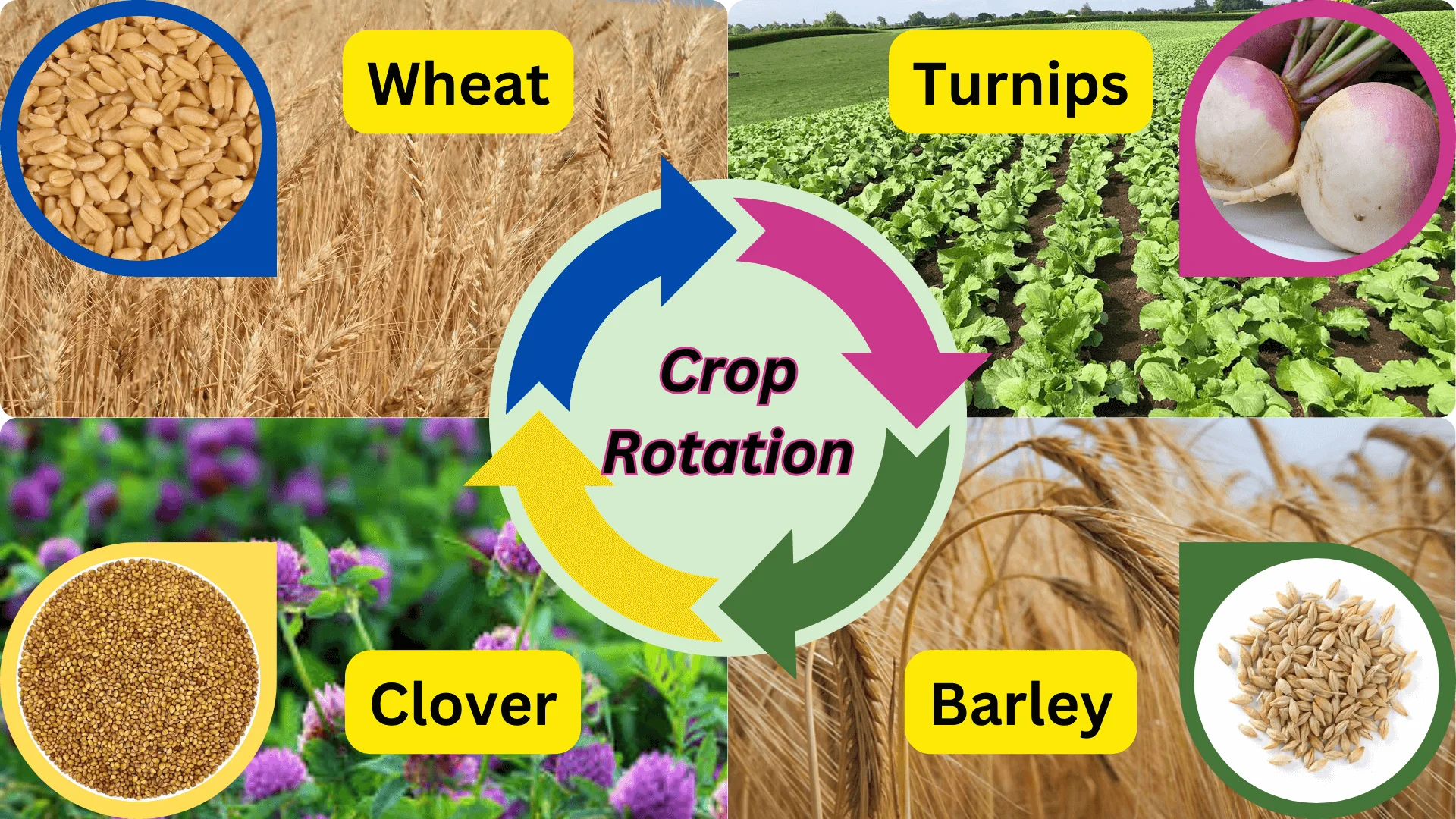
- Crop Rotation
- Crop rotation involves alternating different crops in the same field over several seasons. This practice helps to maintain soil fertility by replenishing the nutrients taken by different crops. For instance, leguminous plants can fix nitrogen in the soil, benefiting future crops like wheat or corn.
- Agroforestry
- Agroforestry integrates trees and shrubs into agricultural systems, enhancing biodiversity and providing ecosystem services such as carbon sequestration and water conservation. The presence of trees can also improve soil structure and reduce the risk of erosion.
- Polyculture and Intercropping
- Polyculture farming involves growing multiple crop species together, while intercropping focuses on planting complementary crops side by side. These techniques help increase biodiversity, reduce pest pressure, and improve soil health by diversifying nutrient demands.
- Regenerative Agriculture
- Regenerative agriculture is a holistic approach aimed at improving soil health, biodiversity, and ecosystem functions. Practices such as minimal tillage, cover cropping, and composting are employed to restore soil fertility, reduce carbon emissions, and build resilience against climate change.
Environmental and Social Considerations
- Impact on Biodiversity
- Monoculture farming contributes to habitat loss and a decline in biodiversity. The removal of native vegetation to make way for large-scale monocultures reduces the variety of plants and animals in the area, disrupting ecosystems and causing species extinction.
- Social Implications
- Monoculture farming often favors large agricultural corporations that can afford the technology and resources needed for high-scale production. Small-scale farmers may struggle to compete, leading to economic disparities in rural communities.
- Climate Change and Monoculture
- The intensive nature of monoculture farming exacerbates climate change. Deforestation, soil degradation, and the emission of greenhouse gases from machinery and chemical inputs contribute to global warming. Furthermore, monoculture farms are less resilient to extreme weather events, which are becoming more frequent due to climate change.
Sustainable Monoculture: Is It Possible?
Monoculture farming, the practice of growing a single crop on large expanses of land year after year, has been central to modern industrial agriculture. While this method has greatly increased productivity and efficiency, it has also raised concerns about environmental sustainability. With issues like soil degradation, biodiversity loss, and reliance on chemical inputs, many critics argue that monoculture farming is inherently unsustainable. However, as agricultural technologies and practices evolve, a pressing question arises: Can monoculture farming be made sustainable?
Challenges of Monoculture Farming
Monoculture farming has led to some significant challenges that undermine sustainability. One of the primary issues is soil degradation. When the same crop is grown continuously, the soil becomes depleted of specific nutrients that the crop consumes. Over time, the lack of biodiversity in the soil contributes to declining yields, making it harder to maintain long-term productivity.
Another major concern is pest and disease vulnerability. Monoculture fields lack the natural checks and balances that diverse ecosystems provide. Without the presence of multiple species, pests that target a specific crop can proliferate, leading to heavy reliance on pesticides. The overuse of such chemicals not only harms the environment but also leads to the development of resistant pests, exacerbating the problem.
Furthermore, monoculture farming contributes to the loss of biodiversity. By converting large areas of land into single-crop systems, the natural habitat of various plant and animal species is destroyed, leading to reduced ecological diversity. The absence of other plants, insects, and wildlife in these monoculture landscapes also weakens the resilience of the ecosystem.
Pathways to Sustainable Monoculture
Despite these challenges, some proponents argue that monoculture can be made more sustainable with the right interventions. One potential pathway to sustainability is through crop rotation. While technically not pure monoculture, rotating crops in a planned sequence can mitigate some of the adverse effects of continuous monoculture. Rotating crops like legumes, which fix nitrogen in the soil, can help replenish essential nutrients and reduce the need for synthetic fertilizers.
Another critical solution lies in the advancement of genetically modified crops. Genetically modified organisms (GMOs) can be engineered to resist pests and diseases, reducing the need for chemical pesticides. Additionally, GMOs can be developed to require fewer water and nutrient inputs, making monoculture farming more resource efficient.
Precision agriculture is also gaining traction as a way to manage monoculture systems sustainably. Using technology like drones, sensors, and GPS-guided machinery, farmers can apply water, fertilizers, and pesticides more precisely, minimizing waste and environmental damage. Precision agriculture allows farmers to address specific problem areas within a monoculture field, reducing the overall impact of intensive farming on the land.
Cover cropping and reduced tillage are additional methods that can enhance soil health in monoculture systems. Cover crops, such as grasses or legumes, are planted during off-seasons to prevent erosion, improve soil structure, and increase organic matter. Meanwhile, reduced tillage minimizes soil disturbance, helping to preserve microbial life and prevent nutrient loss.
A Balancing Act
Achieving sustainable monoculture farming is a balancing act. While it is possible to make monoculture more environmentally friendly through innovations like crop rotation, GMOs, precision farming, and conservation practices, the broader agricultural system must be rethought to prioritize long-term ecological health. In the pursuit of sustainability, monoculture farming will likely need to evolve into a more diverse, integrated system that blends the efficiency of modern practices with the resilience of traditional agricultural methods.
Conclusion
Monoculture farming has undoubtedly revolutionized the agricultural industry, enabling the mass production of key crops and supporting global food systems. However, its environmental and social costs cannot be ignored. As we move forward, it is crucial to strike a balance between efficiency and sustainability in agriculture. Integrating alternative practices like crop rotation, agroforestry, and polyculture into monoculture systems can help mitigate some of the risks while ensuring that we continue to feed the growing population in a responsible and environmentally friendly manner.

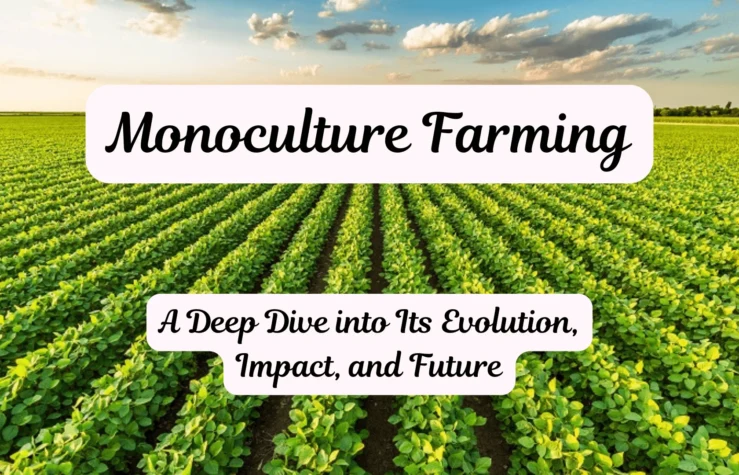
1 Comment